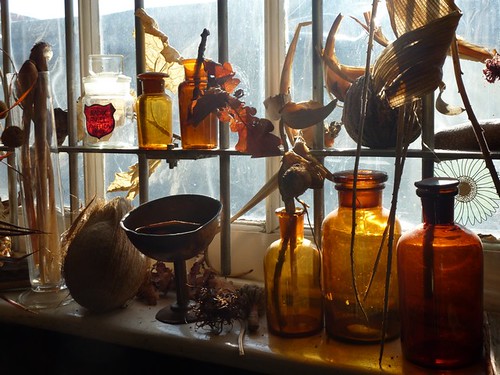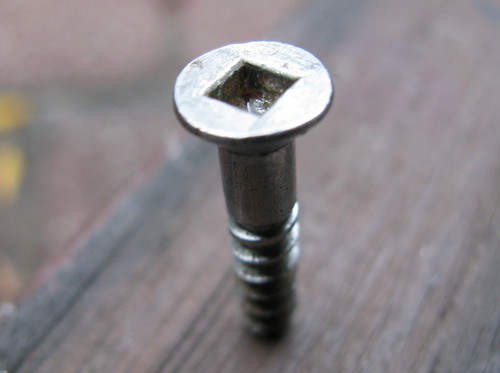It's been a busy weekend so I've had no time for swanning about London's museums, cathedrals, galleries and other blog-worthy spots. Instead, you get a post I can compose entirely from the comfort of my couch!
bless = an abbreviation of the phrase “Bless her/him/them!” used when reacting to something cute or sweet or adorable. As in “Is that a miniature dachshund puppy? Awwww… bless!”. Also used in the phrase “God bless his/her cotton socks”, which I am told is the mandatory suffix whenever referring to the Queen Mother (now sadly departed). As in “The Queen Mum God-bless-her-cotton-socks was a keen fan of the horses.”
cheers = Thanks. It’s also used in the way we think of it: as a toast while clinking glasses together. But it’s much more commonly heard now as a substitute for thank you. Sometimes lengthened to “Cheers for that”. And as ever in England it’s often used ironically, as in: “Ah, I see you’ve managed to reverse your Land Rover over my dachshund. Cheers for that.”
yonks = A very long time. As in “Nigel! I haven’t seen you in yonks, mate! Say, do you realise you’ve just run over that woman’s dachshund?”
“Sod it.” = Screw it. Also: “sod this”, “sod that”, “sod off”… you get the idea. “Sod” is also used in the rather more colourful phrase “Sod this for a game of soldiers!”, which generally means “Screw it, I’m not doing this anymore it’s too difficult / too expensive / no fun / not worth the effort.” For instance our man Nigel in the Land Rover, who has just flattened some poor woman's dachshund, might get tired of the situation and decide to make tracks at which point he he could preface his exit with “Sod this for a game of soldiers!”
full stop = period - the punctuation mark that appears at the end of a sentence. Also used colloquially the same way we use period. As in, “You’re not going anywhere until you apologise for running over poor Murgatroyd and that’s all there is to it, full stop!”
bottle = nerve, guts. As in “I was going to call the police on that awful man who ran over Murgatroyd, but I lost my bottle when he pulled out a flickknife.”
flickknife = switchblade.
Old Bill = the police. As in "Luckily, that's when the Old Bill turned up and nicked him!"
(also: nick = steal. As in “I left my bike locked up at Vauxhall station one Thursday night and it got nicked.” Ironic isn’t it, that you can get nicked for nicking something?)
cheeky = impudent, sassy, mouthy, mischievous. A mild rebuke, but can also be a bit affectionate. As in, “That cheeky lad pinched my bottom!” Also used to mean quick or sly, as in “Fancy a cheeky drink down the pub while the wife’s out?” Cheek can also be used as a noun, often in phrases like, “I’ll have no more of your cheek young man!”.
pull a face, pulling faces = Making a face, making faces. I have no idea why one MAKES a face in Canada and PULLS a face here. However, pulling faces is part of a very odd rural English tradition, namely:
gurning = pulling faces. To clarify: a gurn is an ugly funny face, gurning is the act of making ugly faces. Usually used in reference to gurning contests, which are just what they sounds like: competitions to see who can make the ugliest face. The most famous of these is the World Gurning Championship, held every year at the Egremont Crab Fair. The fair has been held at least as far back as 1267, when King Henry III granted it a Royal Charter. It’s not known how far back the gurning contest goes, but a newspaper in 1852 referred to it as “ancient”.
= serving time in jail (though of course here that's spelled gaol. Strange but true.) Odd phrase... I believe it refers to the traditional breakfast served in prison. It would be used thusly: "Poor Nigel's doing porridge for running over a dachshund, pulling a flicknife on the owner, and then giving cheek to the Old Bill. He'll be gone for yonks."
bless = an abbreviation of the phrase “Bless her/him/them!” used when reacting to something cute or sweet or adorable. As in “Is that a miniature dachshund puppy? Awwww… bless!”. Also used in the phrase “God bless his/her cotton socks”, which I am told is the mandatory suffix whenever referring to the Queen Mother (now sadly departed). As in “The Queen Mum God-bless-her-cotton-socks was a keen fan of the horses.”
 |
| Gratutious picture of the Queen Mother God-bless-her-cotton-socks |
 |
| Gratutious picture of a miniature dachshund puppy. Awww... bless! |
“Sod it.” = Screw it. Also: “sod this”, “sod that”, “sod off”… you get the idea. “Sod” is also used in the rather more colourful phrase “Sod this for a game of soldiers!”, which generally means “Screw it, I’m not doing this anymore it’s too difficult / too expensive / no fun / not worth the effort.” For instance our man Nigel in the Land Rover, who has just flattened some poor woman's dachshund, might get tired of the situation and decide to make tracks at which point he he could preface his exit with “Sod this for a game of soldiers!”
full stop = period - the punctuation mark that appears at the end of a sentence. Also used colloquially the same way we use period. As in, “You’re not going anywhere until you apologise for running over poor Murgatroyd and that’s all there is to it, full stop!”
bottle = nerve, guts. As in “I was going to call the police on that awful man who ran over Murgatroyd, but I lost my bottle when he pulled out a flickknife.”
flickknife = switchblade.
Old Bill = the police. As in "Luckily, that's when the Old Bill turned up and nicked him!"
 |
| The Old Bill. Though this seems to be an exceedingly Young Bill... |
nick = arrest. As in “While he was being nicked, the bloke had the cheek to pull a face at the copper!"
(also: nick = steal. As in “I left my bike locked up at Vauxhall station one Thursday night and it got nicked.” Ironic isn’t it, that you can get nicked for nicking something?)
cheeky = impudent, sassy, mouthy, mischievous. A mild rebuke, but can also be a bit affectionate. As in, “That cheeky lad pinched my bottom!” Also used to mean quick or sly, as in “Fancy a cheeky drink down the pub while the wife’s out?” Cheek can also be used as a noun, often in phrases like, “I’ll have no more of your cheek young man!”.
pull a face, pulling faces = Making a face, making faces. I have no idea why one MAKES a face in Canada and PULLS a face here. However, pulling faces is part of a very odd rural English tradition, namely:
gurning = pulling faces. To clarify: a gurn is an ugly funny face, gurning is the act of making ugly faces. Usually used in reference to gurning contests, which are just what they sounds like: competitions to see who can make the ugliest face. The most famous of these is the World Gurning Championship, held every year at the Egremont Crab Fair. The fair has been held at least as far back as 1267, when King Henry III granted it a Royal Charter. It’s not known how far back the gurning contest goes, but a newspaper in 1852 referred to it as “ancient”.
= serving time in jail (though of course here that's spelled gaol. Strange but true.) Odd phrase... I believe it refers to the traditional breakfast served in prison. It would be used thusly: "Poor Nigel's doing porridge for running over a dachshund, pulling a flicknife on the owner, and then giving cheek to the Old Bill. He'll be gone for yonks."
"Result!" = a celebratory phrase used when commenting on a pleasing outcome. As in:
Woman with flattened dachshund: "They've finally locked up the bastard who ran over poor little Murgatroyd."
Sympathetic friend: "Result!"
estate car = station wagon. That is all. Really, what more can I say? It means station wagon… how many more times do you think I can drag that poor dachshund into this? Hasn't he suffered enough?




























